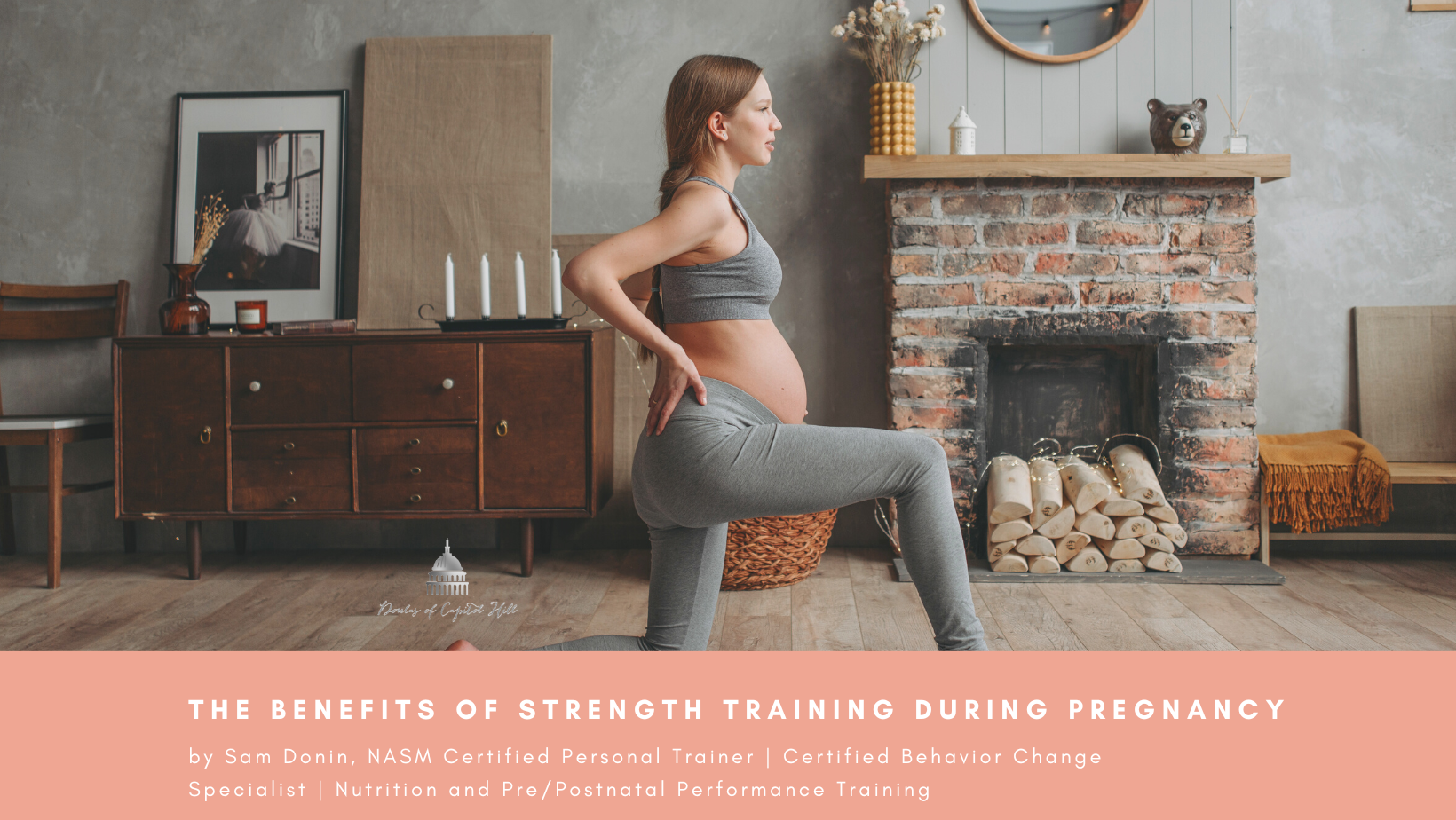The Benefits of Strength Training During Pregnancy
By Sam Donin, NASM Certified Personal Trainer | Certified Behavior Change Specialist | Nutrition and Pre/Postnatal Performance Training
Most of us are familiar with commonly held beliefs and “guidelines” when it comes to pregnancy such as getting plenty of rest and eating for two. Over the last 30 years there has been significant research into the benefits of exercise during pregnancy for both the mother and baby with surprising results that are turning these long-held beliefs upside down! It is always important to consult with your doctor prior to starting any new exercise program but here we will look at a few of the benefits that exercise, specifically resistance training, can have on both the pregnant individual and the baby.
First and foremost, exercise and strength training can have an important impact on preventing excess weight gain. While weight gain is healthy and expected during pregnancy, gaining too much weight during pregnancy can have some negative effects including increased risk of pain and injury.
A recent study by the CDC estimated that 47% of pregnant persons are gaining more than the recommended amount of weight during pregnancy relative to their pre-pregnancy weight! The growing baby will naturally shift the body out of its normal alignment and almost all pregnant people are familiar with the low back pain or tightness in the shoulders as a result of the growing baby. Strength training can help minimize any excess weight gain and help keep the body in a more neutral alignment throughout the pregnancy. The aches and pains of a pregnancy are highly specific to each individual but strength training, when done properly, has been shown to help manage those aches and pains as much as possible.
Strength training has benefits beyond muscle development as well. Resistance workouts improve digestion and blood circulation which can reduce the likelihood of gestational diabetes and preeclampsia, sometimes by up to 50%! This can also reduce the incidence, intensity, and duration of nausea, constipation, heartburn, indigestion, and swelling in the body. While certainly not perfect, any reduction in these not-so-fun side effects of pregnancy can have an important impact on the physical and psychological well-being of the birthing person.
Pregnancy of course leads up to labor and delivery which can be one of the most physically demanding experiences in a mother’s life. Given the extreme demands that are placed on the body it is helpful to be as prepared as possible and know the immediate impact strength training can have on the big day.
One large study on strength training showed the following benefits when it came to labor and delivery:
● 75% reduction in need for forceps or C-section
● 50% decrease in need for oxytocin
● 50% decrease in need for medical intervention due to fetal heart-rate abnormalities
Clearly not all of the benefits of prenatal strength training belong just to the mother! Some other benefits to the baby include increased likelihood of a healthy birth weight and better cardiovascular function in the newborn baby. Some longer studies have even shown that children born to mothers who exercised regularly can score higher on memory and general intelligence tests in early childhood!
Overall when it comes to prenatal training it is best to take a performance-based approach. A performance-based approach means that the moves selected during a session are designed to mimic a scenario the new parent would be faced with every day, if not multiple times a day. For example, a move commonly seen in a gym is a deadlift, which focuses on the hip hinge. In a gym setting this move is done with a weighted object like a barbell or kettlebell.
We pay attention to the hips moving back, spine staying straight, and knees bending slightly while bracing your core to make sure the body is lifting as efficiently as possible while minimizing any risk of injury. At home the new parent will perform this same move countless times with the baby during bath time, bedtime, changing time, and more!
Whether or not the new parent has exercised regularly for years or is taking pregnancy as a new opportunity to practice some healthy habits it is always best to practice and prepare for the physical demands of parenthood. Working with a qualified trainer is a great way to ensure the pregnant person is preparing for the physical demands of pregnancy, childbirth, and parenthood in the safest way possible.
Sources and Studies
Deputy, N., Kim, S., Sharma, A. (2015). “Gestational Weight Gain – United States 2012 and 2013.” Centers for Disease Control and Prevention.
Dempsey, J.C. et al. (2004). A case-control study of maternal recreational physical activity and risk of gestational diabetes mellitus. Diabetes Research and Clinical Practice, 66, 203-215.
Clapp, J. F., Ill. (1998). Exercising Through Your Pregnancy. Champaign, Ill. Human Kinetics.
Sam is a NASM Certified Personal Trainer and certified Behavior Change Specialist (which focuses on the psychology of behavior change and how to make a lasting impact towards your goals) and holds credentials in both Nutrition and Pre/Postnatal Performance Training. Sam has worked with adult clients of all ages and skill levels to help them achieve their personal fitness goals. Find out more about opportunities to reach your personal fitness goals by visiting his website vFit or on Instagram @your_vfit




